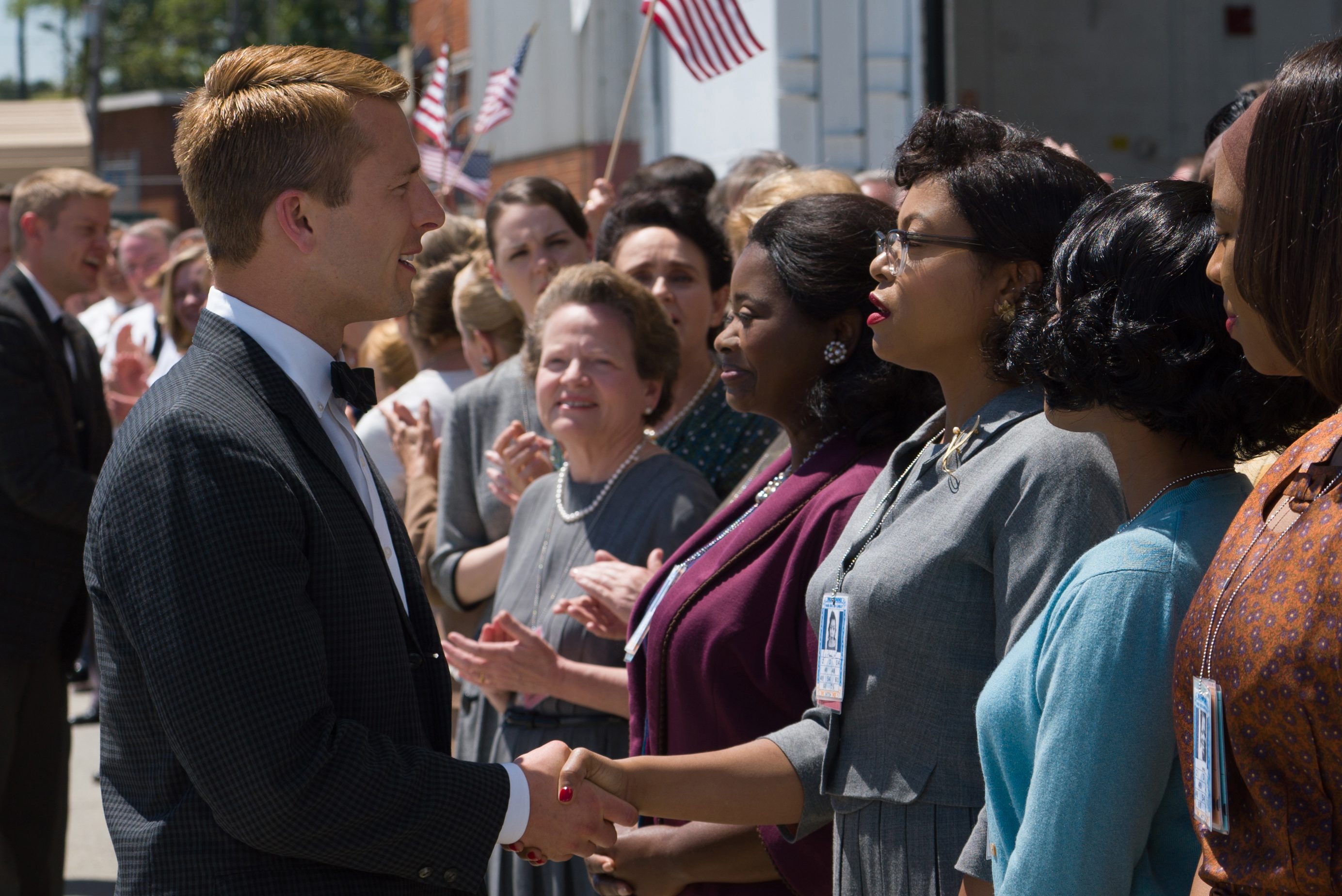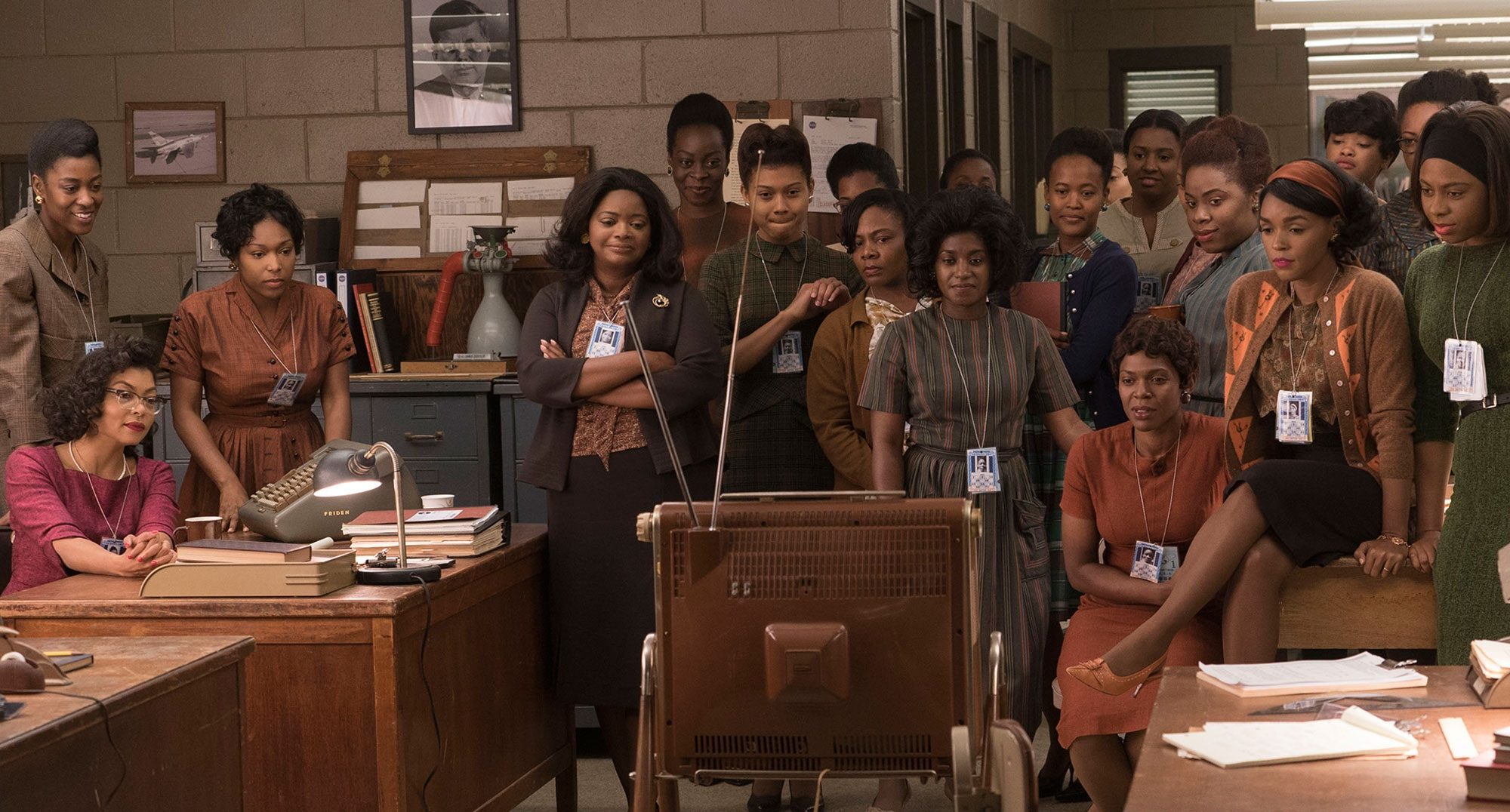

Science doesn’t care whether you’re black or white and mathematic equations simplify the same way for women and men. These simple concepts proved difficult to learn in the 1960s and they’re at the center of Theodore Melfi’s new film Hidden Figures, the under-told story of three African-American women that helped launch America’s space program. It’s a film that manages to be a genuine crowd pleaser and a fascinating study of tacit racism and sexism that, despite half a century of history, feels maddeningly relevant.
In 1957, the Russians launched Sputnik, winning a crucial victory in the space race and causing America to redouble its efforts to send man into space. But this is the 1960s. IBM computers are as big as rooms, and someone at NASA built the doors too small, so for the time being, all computation is done by human computers – including a team of African American women who, confined to the segregated area of NASA’s Langley Research campus, compute the launch and landing for the spacecrafts. Among them are Dorothy Vaughan (Octavia Spencer, The Help) who manages the team of computers but has been denied the role of supervisor; Mary Jackson (Janelle Monáe, Moonlight), who dreams of being an engineer but can’t because the required classes are held at all white schools; and Katherine Johnson (Taraji P. Henson, Empire), a brilliant mathematician charged with checking the calculations for the Atlas rocket from heavily redacted reports.
The success of Hidden Figures lies in its balance of American pride and ingenuity and American shame. That’s not to say the film is simply half The Right Stuff, half racial drama. The script, co-written by Melfi and Allison Schroeder (Mean Girls 2) and based on Margot Lee Shetterly’s book, illustrates how the scientific and racial roadblocks are intertwined and the insidious ways that prejudice inhibits progress. Katherine spends a large portion of her day running across the campus to reach the only colored restroom, continually loosing valuable time. It’s a situation initially played for comedy, but it highlights one of the largest hurdles NASA faced in the 60’s – it’s hard to win the space race when you’ve handicapped all the best and brightest minds that aren’t white men.
While the national milieu of racism is certainly present, the attitudes are best represented by the women’s bosses and coworkers at NASA. The most reductive of these being Paul Stafford, played by Jim Parsons (The Big Bang Theory), a man who clings to patriarchy like a whining child. It’s the most familiar archetype in the film and, despite Parsons’s best intentions, serves as little more than a straw man for sexism. A more nuanced portrayal of prejudice can be found in Vivian Mitchell (Kirsten Dunst, Melancholia), a woman fighting her own battle with sexism while ignoring her complacency in NASA’s racist institutions. It’s a performance that brilliantly exemplifies how our own injustices can blind us to the injustices of others, and Dunst plays it with wonderfully cold indifference and surprising pathos.
Perhaps most interesting is Al Harrision (Kevin Costner), the director of the Space Task Group, who, in a moment of perfectly clumsy gravitas, tears down the colored bathroom sign. His journey is not one from racist to activist, as is often depicted in films of this era, and belies a false sense of victory over racism. His awakening is a more profound realization of a more insidious bias – admitting that bias exists at all. It is Harrison’s privilege as a white man to be unaware of the segregated bathrooms. It’s much easier to call out and triumph over acts of racism. To admit that the world we live in is inherently racist is a more difficult proposition.
For a film steeped in mathematics and political nuance, Hidden Figures looks surprisingly lively. Cinematographer Mandy Walker (Australia) brings the 1960s to life with bursts of color, and Peter Techner’s editing pops to music by Pharrell and a score by Hans Zimmer and Benjamin Wallfisch. This all helps keep the film from feeling too heavy which helps Melfi paint a more complicated portrait of America. A nation of troubled racial and gender politics, and a nation where ingenuity and gumption can overcome prejudice. Whether its Katherine’s sheer mathematical brilliance, Mary’s perseverance and strength to chase her dreams despite pressure from society and her own husband, or Dorothy’s foresight to see digital computers as the future and teach herself Fortran, the programming language of the new IBMs. Henson, Spencer, and Monáe all give powerhouse performances – falling into their roles with gravitas and grace. With these three inspiring women at the film’ center, it’s hard for Hidden Figures not to be a crowd pleaser.
Verdict: 5 out of 5
It’s an interesting time for women in Hollywood. We’re in a supposed boom of strong female characters, what with characters like The Hunger Games’s Katniss and The Avengers’s Black Widow – both undeniably strong women, but its exciting to finally see a big studio film anchored by women who aren’t merely a female version of the traditionally male hero role and whose strength isn’t rooted in some deep physical or sexual trauma. Hidden Figures is about three strong black women. They are mothers and wives, and engineers and physicists, and precisely the kinds of role models we need right now. Theodore Melfi’s film is inspiring and cringe inducing in equal measure, examining how the best and worst intentions of American history struggle against each other. Films have always looked to the past to help us better understand the present and Hidden Figures certainly feels unsettling relevant today. The struggles Katherine Johnson, Dorothy Vaughan, and Mary Jackson faced are still experienced by people today. I hope this film helps people reflect the past, examine the present, and remember that when we set aside what divides us, we can reach the stars.


